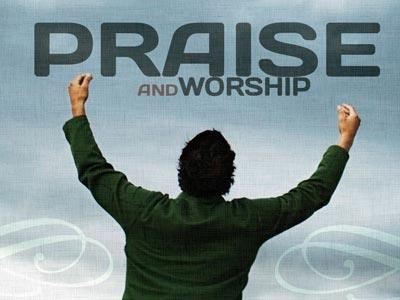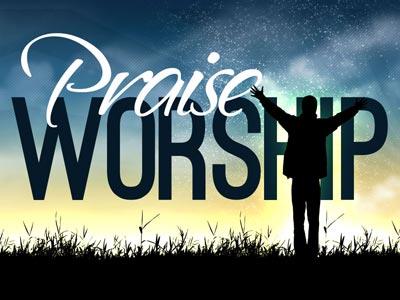-
Can Worship Change Series
Contributed by Wesley Bishop on Nov 28, 2017 (message contributor)
Summary: This answers the question about worship and change.
We don’t do well at predicting the future. In 1962 Decca Recording Co said the Beatles would never make it. Gary Cooper once said, “I’m just glad that it’ll be Clark Gable who’s falling on his face and not Gary Cooper.” What was he talking about? Gone with the Wind. In 1899, the director of the U.S. Patent Office said his office should be abolished.
In the church change and planning for the future is just as speculative. Over the centuries of the church change has always sparked controversy. Air conditioning in churches was once criticized. Controversy and change have always been a part of life, and a part of the church.
One of the biggest areas of controversy has been in the area of worship. There has been a long running struggle between change and continuity.
The reality of change is inevitable.
Old Testament:
Moses’ time: Little, if any, singing or music. Little emphasis on thanksgiving and praise.
David’s time: Around the clock singing, dancing. Heavy emphasis on thanksgiving and praise.
Other events: They moved from the portable tent to Solomon’s temple. During the Exile the synagogues developed.
New Testament:
Palestine: Worship was modeled on the Jewish synagogue worship.
Europe: Corinthian worship was highly participatory and charismatic.
Post Biblical Record:
The method of receiving communion has changed. The Bible was translated into the common language of the people.
Worship music: In A.D. 367 the Council of Laodicea banned congregational singing and musical instruments. When singing was again allowed in churches, it was restricted to biblical passages such as Psalm 23. Human written hymns we banned up until the 13th century. Much was what we think as the “good old” hymns of the church would be banned from churches. Songs like the “contemporary” “Better is One Day” would be allowed because they are taken directly from the Bible, Psalm 84 in this case.
Tension: “Silent Night” (1818) was called “vulgar mischief and void of all religious and Christian feelings” by George Weber music director of the Mainz Cathedral. Handel’s Messiah was criticized for its repetition of the word “Hallelujah.” Benjamin Keach’s story of a non-singing church. Mark 14:26
What doesn’t change?
The TRUTH doesn’t change. Read Exodus 20:3-11. The first four commandments give us the Object of our worship. (I) God and God alone is who we are to worship. (II) Jesus said, “God is Spirit.” We are to worship God in spirit, not images of God. Images and symbols serve to remind us, but they are not to be worshiped. (III) We are not to disgrace God by flippant use of his name. (IV) We are to set aside time devoted to worshiping God.
We worship God to honor him and bring pleasure to him.
What does change?
Language changes. Services used to be conducted in Latin. HOW we say what we say has to change. Haiti experience in worship.
Dangers of too much change:
The danger in too much change is losing what shouldn’t change.
Read 1 Samuel 13:8-14.
Saul didn’t follow the prescription of God.
The OT prophets (esp. Amos) took on worship that changed too much. Worship took on Canaanite forms. They watered down the message.
Change does not necessarily mean watering down the message.
Dangers of not changing:
We lose the why and who of worship.
Last week we looked at horribly stale unchanging worship as recorded by the prophet Isaiah.
“We can have the right ritual (the right “how”) without having the right “why”. Listen to James Kelley, an Episcopalian from Wash D.C. “We love all the incense, the stained glass windows, the organ music, the vestments, and all of that. It’s drama. It’s aesthetics. It’s the ritual. That’s neat stuff. I don’t want to give all that up just because I don’t believe in God.” James Kelly is an atheist. He loves the “how” without the “why”! There is a danger in trying to solve the tension between change and continuity by demanding that nothing change. – Dr. Rich Brown
The real danger of not changing is losing sight of the message.
Balancing Change and Continuity:
Cars are a great example. The “new” VW Beetle and the PT Cruiser are examples. They have the old styling with the modern conveniences.
Old vs. New Songs: “One Day” and “Lord, I Lift Your Name on High” have the same message. The message is the same, but the tune is different. Point out similarities and differences between the songs.
Hymns are packed with theology. Jim Diehl called them filet mignon. Newer songs don’t have as much “deep” theology. Jim Diehl called them salad. He said we need a good balanced diet. This is true for people who are healthy. People that are starving can’t handle too much food. People in this world are spiritually starving and need to be fed bite-sized pieces. Paul gave the Corinthians “milk, not solid food, for [they] were not ready for it.” (Read 1 Corinthians 3:1-2)

 Sermon Central
Sermon Central



